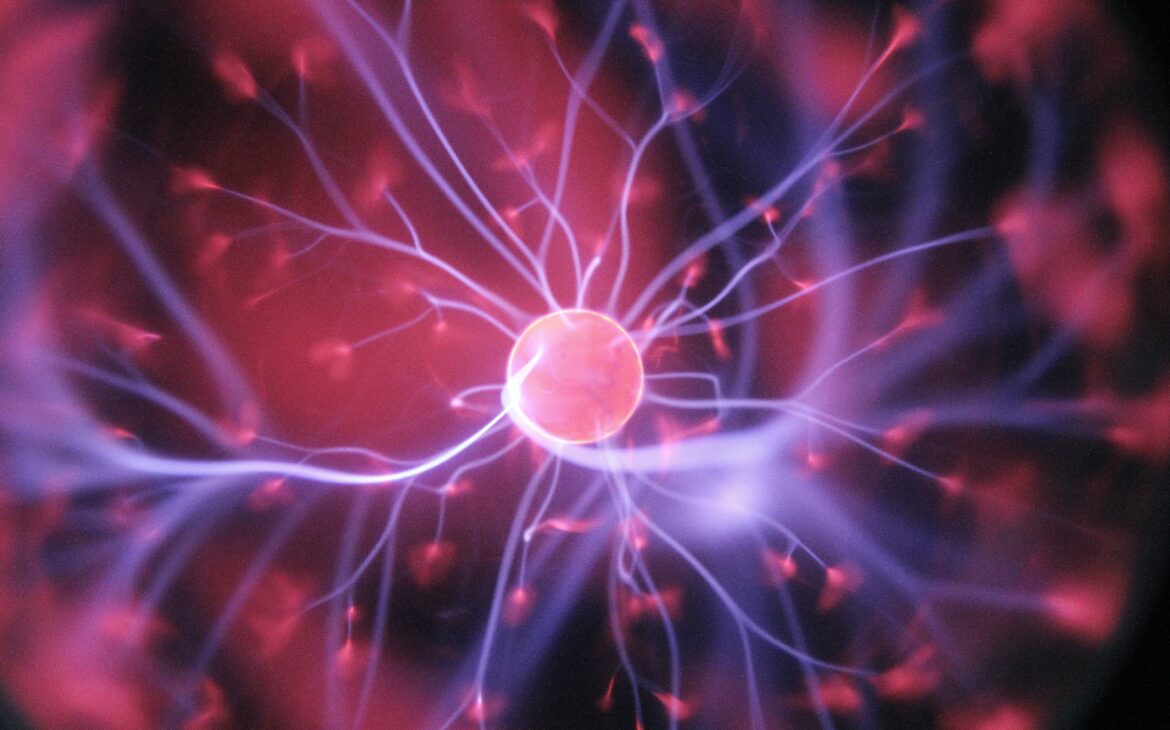Step-by-Step Guide to Understanding and Implementing Neural Link Technology
Neural Link Technology, a cutting-edge field that merges neuroscience and computer science, has gained significant attention in recent years for its potential to revolutionize the way we interact with technology. By establishing a direct connection between the human brain and external devices, Neural Link Technology opens up a myriad of possibilities, from enhancing our cognitive functions and physical abilities to transforming the way we communicate and experience virtual realities.
In this comprehensive guide, we will delve into the fundamentals of Neural Link Technology, explore its applications and benefits, examine the challenges and ethical considerations associated with its implementation, provide a step-by-step guide to adopting this technology, discuss safety and security aspects, and finally, ponder the future implications and potential developments of this fascinating field. Let’s embark on this journey to better understand and embrace the potential of Neural Link Technology.
1. Introduction to Neural Link Technology
What is Neural Link Technology?
Neural Link Technology, also known as brain-computer interface (BCI) technology, is a mind-blowing innovation that allows direct communication between the brain and external devices. It’s like having a high-tech bridge connecting your thoughts and actions to the digital world. Forget keyboards and touchscreens – with neural link technology, you can control things with just the power of your mind.
Brief History and Evolution of Neural Link Technology
The idea of connecting brains and machines has been around since the 1970s, but it wasn’t until recent years that Neural Link Technology started making significant strides. The visionary entrepreneur Elon Musk and his company Neuralink have played a pivotal role in pushing the boundaries of this field.
While early experiments involved using neural link technology to help individuals with disabilities regain functionality, the potential applications quickly expanded to include augmenting human abilities and even merging with artificial intelligence. It’s an exciting journey of discovery that continues to evolve at an astonishing pace.
2. Fundamentals of Neural Link Technology
Neural Networks and Brain-Computer Interfaces Explained
Neural networks are the foundation of neural link technology. They are complex systems of interconnected neurons that mimic the structure and function of the human brain. These networks can process information, learn from data, and make predictions.
Brain-computer interfaces (BCIs) form the bridge between neural networks and external devices. They use electrodes implanted in the brain or non-invasive methods to record the electrical signals generated by neurons. These signals are then translated into commands that can control computers, prosthetic limbs, or other devices.
Key Components and Functionality of Neural Link Systems
Neural link systems consist of three essential components: the implant, the communication device, and the external device. The implant, usually a small electronic device, is placed inside the brain and records neural activity. The communication device receives data from the implant and processes it, allowing for seamless interaction with external devices. The external device could be anything from a computer to a robotic arm, responding to the user’s thoughts and commands.
These systems enable bidirectional communication, meaning information can flow both ways. Neural signals from the external device can also be sent back to the brain, creating a feedback loop. This opens up exciting possibilities for not only controlling technology but also receiving sensory feedback directly in the brain.
3. Understanding Neural Networks and Brain-Computer Interfaces
Neural Networks: Structure, Types, and Function
Neural networks are composed of layers of artificial neurons, arranged in a networked structure. Each neuron takes inputs, processes them using mathematical functions, and produces an output. These networks can be trained to recognize patterns, make predictions, or solve complex problems.
There are different types of neural networks, including feedforward networks, recurrent networks, and convolutional networks. Each type has its unique architecture and is suited for specific tasks.
Brain-Computer Interfaces: Connecting Neural Networks to External Devices
Brain-computer interfaces provide a way to interface neural networks with external devices. Invasive BCIs involve surgically implanting electrodes directly into the brain, while non-invasive BCIs use external sensors to detect brain activity.
BCIs employ signal processing algorithms to extract meaningful information from the recorded neural data. These algorithms interpret the brain signals and translate them into commands that can be understood by external devices. The goal is to create a seamless and intuitive connection between the user’s thoughts and the actions performed by the device.

4. Benefits and Applications of Neural Link Technology
Advancements in Healthcare and Medicine
Neural link technology holds immense potential to revolutionize healthcare and medicine. It can help paralyzed individuals regain mobility, assist in the treatment of neurodegenerative diseases, and provide new avenues for brain research and understanding. With further advancements, it may even enable the restoration of sight, hearing, and other sensory functions.
Enhancing Human Capabilities and Performance
Imagine being able to enhance your cognitive abilities, and memory, or even learn new skills at an accelerated pace. Neural link technology could make this a reality by enabling direct access to information or augmenting our cognitive processes. It could level up human potential in ways we’ve only seen in science fiction.
Potential Applications in Gaming, Virtual Reality, and Entertainment
Neural link technology has the potential to revolutionize the gaming industry and virtual reality experiences. Imagine being fully immersed in a video game where your thoughts and intentions control the actions of your character. It could take gaming to a whole new level, making it a truly mind-blowing experience. Additionally, it could pave the way for innovative entertainment experiences, such as movies or music directly experienced in the mind.
In conclusion, Neural Link Technology is a groundbreaking innovation that enables direct communication between the brain and external devices. With its potential to transform healthcare, enhance human capabilities, and create mind-blowing entertainment experiences, we are entering an exciting new era where the boundaries between humans and machines blur. The future is here, and it’s time to embrace the power of our minds!
5. Challenges and Ethical Considerations in Implementing Neural Link Technology
Privacy and Security Concerns
As we delve into the world of Neural Link Technology, it’s important to address the elephant in the room: privacy and security. When our brains become connected to external devices, the potential for unauthorized access and data breaches becomes a real concern. We don’t want our innermost thoughts and memories floating around in the digital realm for anyone to stumble upon. So, robust privacy measures and encryption protocols must be in place to protect our neural data from prying eyes. After all, we don’t want our embarrassing moments or secret fantasies to become viral sensations.
Ethical Implications and the Impact on Personal Autonomy
Implementing Neural Link Technology raises important ethical questions. How much control are we willing to surrender over our thoughts and actions? While technology promises incredible advancements in medicine and human capabilities, we must carefully examine the potential impact on personal autonomy. It’s crucial to ensure that individuals have the power to choose when, how, and to what extent they want to integrate with Neural Link systems. We don’t want a future where our brains are held hostage by corporate interests or government control. Let’s keep the power of autonomy in our hands and our brains, shall we?
Addressing Potential Bias and Discrimination
As with any innovative technology, there is a risk of perpetuating bias and discrimination. If Neural Link systems are not developed and deployed inclusively and equitably, we could inadvertently reinforce existing social inequalities. We must be vigilant in ensuring that access to Neural Link Technology is not limited to a select few, but rather made available to all individuals who can benefit from it. Let’s break down barriers and ensure that everyone has an equal chance to enhance their lives and reach their full potential.
6. Step-by-Step Guide to Implementing Neural Link Technology
Assessing Feasibility and Compatibility
Before leaping headfirst into Neural Link Technology, it’s important to assess whether it’s the right fit for you. Not everyone’s brain is meant to be wired to a computer (or maybe it is, who knows?). Consult with a qualified professional to evaluate your brain’s compatibility and determine the feasibility of implementing Neural Link Technology. After all, we wouldn’t want any sparks flying where they shouldn’t be.
Selecting and Preparing Neural Link Devices
Once you’ve determined that Neural Link Technology is in your future, it’s time to select the right device. There are various neural link devices available, each with its own set of features and capabilities. Don’t forget to read the fine print and make sure the device comes with a satisfaction guarantee. We wouldn’t want to be stuck with a neural link that only plays Justin Bieber on repeat, now would we?
Surgical Procedures and Implantation Process
Now comes the slightly terrifying part – the surgical procedure. To implant the neural link device, you’ll need to undergo a surgical procedure. Don’t worry, though! Qualified medical professionals will be there to guide you through it. Just remember to take a deep breath and try not to imagine all the horror stories you’ve heard about surgical mishaps. You’ll be in good hands, quite literally!
Calibration and Training of Neural Link Systems
Congratulations, you now have a neural link device implanted in your brain! But hold on, we’re not quite done yet. It’s time to calibrate and train the neural link system to work harmoniously with your unique brain functions. This may involve various tests, exercises, and, of course, patience. Don’t worry if it takes a bit of time to get things just right. Rome wasn’t calibrated in a day, you know!
7. Ensuring Safety and Security in Neural Link Implementation
Risk Assessment and Mitigation Strategies
Now that Neural Link Technology is a part of your life, ensuring ongoing safety and security is crucial. Regularly assess potential risks and implement mitigation strategies to minimize any unforeseen mishaps. It’s always better to be safe than sorry, especially when it comes to tinkering with our brains. We don’t want any “oops, I accidentally erased my childhood memories” situations, do we?
Data Protection and Encryption
Protecting your neural data is of utmost importance. Implement robust data protection measures and encryption protocols to keep those precious brainwaves secure. After all, you wouldn’t want your neural data falling into the wrong hands. So, let’s make sure our thoughts remain private and confidential, shall we?
Regular Maintenance and Monitoring
Just like any piece of technology, Neural Link systems require regular maintenance and monitoring. Stay in touch with your healthcare provider or technology support team to ensure everything is functioning as it should. Regular check-ups and updates are essential to keep your neural link running smoothly. So, no excuses for slacking off on those maintenance appointments!
8. Future Implications and Potential Developments of Neural Link Technology
Advancements in Neural Link Technology Research
Neural Link Technology is still in its infancy, but the possibilities for future advancements are mind-boggling. Ongoing research and development are paving the way for exciting breakthroughs. Who knows what the future holds? Maybe we’ll have neural links that can make us fluent in every language or give us the ability to teleport. Okay, maybe not teleportation, but a girl can dream, right?
Potential Impact on Society and Human Evolution
As Neural Link Technology continues to evolve, its impact on society and human evolution cannot be ignored. This technology has the potential to transform the way we live, learn, and interact with the world. As we venture into this brave new world, let’s adapt and embrace the changes while staying true to our values and ensuring an inclusive and equitable future for all. Because, hey, the future is coming whether we like it or not, so we might as well make it awesome.
Conclusion
In conclusion, Neural Link Technology represents an exciting frontier in the intersection of neuroscience and computer science. As we continue to explore its potential, it is crucial to approach its implementation with careful consideration of ethical implications and safety measures.
By following the step-by-step guide outlined in this article, individuals and organizations can navigate the complexities of adopting Neural Link Technology effectively. As advancements continue to unfold, it is important to remain mindful of the impact this technology may have on our society and human evolution. With responsible implementation and ongoing research, Neural Link Technology has the potential to shape a future where humans and technology coexist in remarkable ways.
FAQ
1. Can anyone adopt Neural Link Technology?
Neural Link Technology is still in its early stages of development, and its adoption is currently limited to specific research and medical settings. As the technology progresses and becomes more refined, it may eventually become accessible to a broader audience. However, it is important to note that implementing Neural Link Technology involves complex surgical procedures and requires careful consideration of ethical and safety aspects.
2. Are there any risks or side effects associated with Neural Link implants?
As with any invasive medical procedure, there are potential risks and side effects associated with Neural Link implants. These can include infection, damage to surrounding tissues, or issues with compatibility and functionality. It is crucial to work with qualified medical professionals and undergo thorough assessments and consultations before considering Neural Link implantation. Ongoing monitoring and regular maintenance are also essential to minimize any potential risks or complications.
3. What are the ethical considerations surrounding Neural Link Technology?
Neural Link Technology raises various ethical considerations, including privacy and data security, potential misuse of neural data, and impacts on personal autonomy and human identity. Individuals and organizations need to engage in open discussions and establish robust frameworks that address these concerns. Striking a balance between innovation and responsible implementation is key to ensuring the ethical development and deployment of Neural Link Technology.
4. How might Neural Link Technology impact society?
Neural Link Technology has the potential to bring about significant societal changes. It could revolutionize healthcare, offering new ways to treat neurological disorders and enhance cognitive functions. It may also lead to advancements in communication, virtual reality experiences, and human-computer interactions. However, there may be implications related to accessibility, equity, and the potential for dependency on this technology. It is important to closely monitor and navigate these potential impacts as Neural Link Technology continues to evolve.
Thank you for reading 🙂
If you want to build your website at an affordable price contact: www.nextr.in
Read this: How To Become A Web Developer?


















